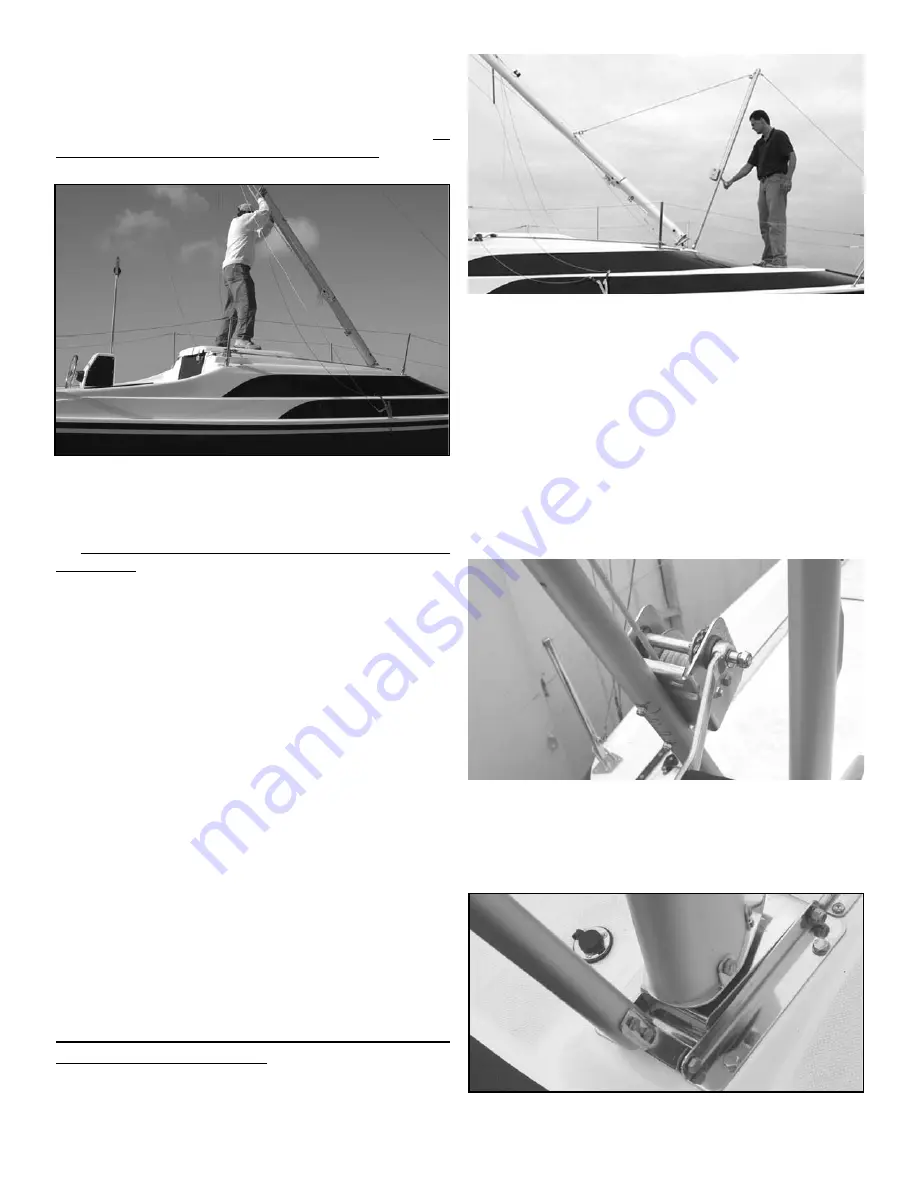
LIFTING THE MAST.
Make sure all mast support wires except
the forestay are connected to the mast and boat. Make sure that
the mast wires are not entangled on the boat or trailer, and then
raise the mast (below). This is best accomplished by standing on
the cabin top, aft of the mast, and lifting the mast into position. Be
careful not to hit a power line with the mast or rigging. You could
be injured or killed.
Lifting the mast
The mast lifting task is made much easier if a second person
stands on the foredeck and pulls on the forestay as the mast goes
up. Look up to make sure the wires are not kinked on their attach-
ment fittings, or tangled on the boat or trailer.
CONNECTING THE FORESTAY.
After the mast is up, tie the
jib halyard to the bow rail to keep the mast from falling backwards
while you connect the forestay to the forward hole in the forestay
chainplate (at the front of the boat). Make sure both ends of the
line are secured to keep the mast from falling backwards. Insert
the clevis pin that comes with the turnbuckle to secure the forestay
to the chainplate. Then install the ring ding so the pin can’t come
out. (Whenever you use a ring ding, make sure that it is turned
fully onto the pin, and that the ring ding can then be rotated freely
without coming out of the hole in the pin). Do not release forward
pressure on the mast until the forestay is connected. If you have
to move the boat after the mast is up, be watchful that you don’t
run it into a power line.
RAISING THE MAST WITH THE OPTIONAL
MAST RAISING SYSTEM
GENERAL.
The following photo gives you an idea of how the
optional mast raising system works.
A pair of wires keeps the mast from falling sideways as the mast
goes up and down. A mast raising pole provides leverage to lift
the mast. There is a fixed length line that goes from the top end
of the pole to the mooring cleat at the front of the deck. This line
keeps the pole from falling to the rear of the boat as the mast is
lifted. Another line goes from the winch (mounted on the pole),
through a pulley at the top of the pole, then down to a strap on the
mast. The winch provides the power to easily lift the mast.
MAST RAISING WINCH.
The following photo shows the
brake winch that raises and lowers the mast. You crank it one way
to raise the mast, and the other way to lower it. Always keep a
firm grip on the winch handle when cranking.
Mast raising winch
MAST RAISING POLE.
Connect the end of the mast raising
pole to the forward holes in the mast base as shown below. Use a
3/8” x 4 1/2” bolt and lock nut.
Mast raising pole attachment
Page 9
Содержание 26 M 2009
Страница 28: ...Page 28...
























